BERG on creativity, the internet of things, and robot arms
London-based inventors and product magicians paint their vision of the connected future and explain a plucky, smiling printer.
BERG describes itself as a design agency that specialises in turning clients' ideas into physical products. Clients include Channel 4, The Guardian, Nokia and the BBC. When it comes to products, BERG has crafted digital curios like a QR code clock, a Twitter-powered cuckoo clock and a little printer (we'll discuss the latter later). We chat with BERG's CEO, Matt Webb, about experimental design, the internet of things and robot arms. Bring your soldering iron.
Why don't you introduce yourselves?
BERG have been developing products and inventing the future since 2005. We work from our base near Old Street in London, at the heart of the cluster of tech and product companies known as Tech City, or, more affectionately, Silicon Roundabout. We began life as a design consultancy working with clients including Google, Intel, Bonnier and Dentsu. In 2012 we were named by Fast Company as one of the world's 50 most innovative companies.
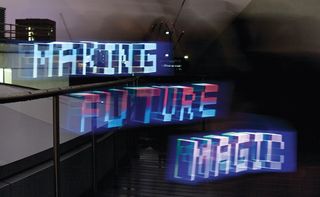
We self-funded and launched our own connected consumer product, Little Printer, which continues to charm and delight families and social media addicts with its cute demeanour and handy functionality. We also recently announced that we are focusing the efforts of the business entirely on the development of our BERG Cloud platform, which will allow us to develop more connected hardware products ourselves and allow anyone to develop their own connected hardware on BERG Cloud.
Where does your name come from?
We used to be called Schulze & Webb, after the two founders. But nobody can spell Schulze or Webb. So when we joined forces with Matt Jones, as we did for four years, we looked for a new name. Warren Ellis named us. Back in the 1950s, loads of people got TVs, and the BBC started making real television drama (as opposed to re-shooting plays). One of these shows was science fiction, The Quatermass Experiment. In the show, Professor Bernard Quatermass heads up the (fictional) British equivalent to NASA: the British Experimental Rocket Group. B. E. R. G. BERG.
The 'iris' logo is derived from the logo of the London and North Eastern Railway, which was made to be cast in metal. We wanted something with solidity, and something small to be stamped in the bottom of products. Our typeface is designed by Phil Baines, and is called Granary. He created it from the giant type found on the canalside warehouses of London. It's from another project of his, but we felt it captured our character. We asked him to complete it, and it's been our typeface ever since.
Looking at past client work, which work makes you feel most proud?
Mag+ was a very complete response to a strategic brief. The project broke ground in video communication for design work and the whole company contributed to the final software output.
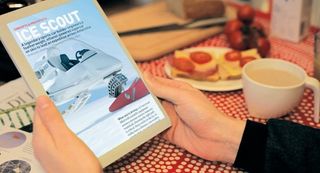
You have a reputation for making and building some fairly diverse and arresting products. Do you want to run us through the highlights?
We've produced urban mapping projections in print adopted by The Museum of Modern Art (MoMA) into its permanent collection; invented new kinds of animation techniques in collaboration with Japanese media giants Dentsu; designed and built data journalism tools for the BBC and 4iP; researched experimental UI for operating systems as yet undeveloped; and prototyped connected products for Google. We've also consulted with a diverse range of companies from Hollywood to chip manufacturers.
What does the word 'product' mean to you?
Products are collections of functions, usually as a part of a broader system, which has been resolved into software or hardware, which people can understand and buy.
How do you think invention differs from design?
Design is intrinsically an inventive sport. In the current climate, there's a broader role of entrepreneurship, which can happen in big companies or in small startups and individuals. It's wider than design because it means products can be pushed into being something new and more valuable because of business thinking, or deep technical knowledge, for example. It's not that design is blind or unaffected by those things, and designers are not restricted from being entrepreneurial, but stretching the definition of design can make the word unusable. It's better to say that there are designers with broad entrepreneurial mindsets than pretending that design as a vocation includes that work by default.
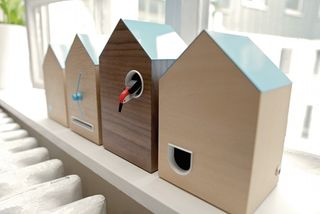
What's the thinking behind your BERG Cloud?
BERG Cloud is a friendly platform for developing connected hardware; a secure, stable and extendable operating system, developer tools and hardware for rapid prototyping, making it as easy and cost-effective to develop connected hardware as it is for the web. If we get this right, BERG Cloud will be really easy to use for developers, and really easy to use for customers. What BERG Cloud does is make it simpler and cheaper to prototype and develop your own web-connected hardware - this means the cost of invention is lower and you can get your ideas to market much quicker. BERG Cloud provides solutions to the common problems of connected devices, allowing you to focus on what matters: product innovation and delightful user experience. We built this platform to make it easier for our own designers to invent and operate connected products themselves. Now we are making it available to everyone.
What skills and physical kit does a developer need to get going with a BERG Cloud Devkit?
We want to make BERG Cloud easy to use for developers and designers. With a BERG Cloud Devkit anyone with a little bit of coding experience can quickly get going with their first prototype connected device. By plugging a BERG Cloud Devshield into an Arduino, Raspberry Pi or mbed (three common prototyping controllers for devices) you can immediately connect to our BERG Cloud Services. From there, we provide open web APIs to connect to your own web services to begin your product prototype. So the skills you need are common web development skills on the one hand and some confidence tinkering with an Arduino or Pi on the other. This frees you up to focus on the design of the device rather than getting tied up in knots with issues around connectivity.
The Little Printer is your demo project for BERG Cloud. How has the community reacted?
When we launched Little Printer we weren't entirely clear who it would appeal to. As we've worked on this over the past year we have seen the number of publications grow to over 150, many of which are popular with children and young families. We will continue to experiment and launch new services like picture messaging, which has proved really popular, especially now we have thousands of our printers out there.
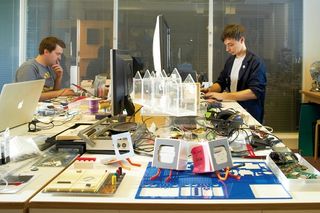
Why is bridging the gap between the web and tangible, corporeal world so important to BERG's work?
So much of BERG's work over the years has in one way or another been focused on allowing the network to escape from behind the glass. The way we interact with the information provided by the internet could potentially spill out and become much more embedded into the world around us. Rather than have an app to tell me when to take my medicine, why not have your medicine bottle tell you when the right time is instead?
What do you think your work tells us about the web and where it's heading?
The web will become more part of our daily experience with more relevance and contextual appropriateness.
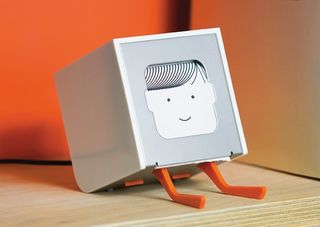
Robot arms, material exploration, knitting, sensor-vernacular: has anybody ever been hurt?
Not seriously.
This article originally appeared in net magazine issue 250.

Thank you for reading 5 articles this month* Join now for unlimited access
Enjoy your first month for just £1 / $1 / €1
*Read 5 free articles per month without a subscription

Join now for unlimited access
Try first month for just £1 / $1 / €1
Get the Creative Bloq Newsletter
Daily design news, reviews, how-tos and more, as picked by the editors.
The Creative Bloq team is made up of a group of design fans, and has changed and evolved since Creative Bloq began back in 2012. The current website team consists of eight full-time members of staff: Editor Georgia Coggan, Deputy Editor Rosie Hilder, Ecommerce Editor Beren Neale, Senior News Editor Daniel Piper, Editor, Digital Art and 3D Ian Dean, Tech Reviews Editor Erlingur Einarsson and Ecommerce Writer Beth Nicholls and Staff Writer Natalie Fear, as well as a roster of freelancers from around the world. The 3D World and ImagineFX magazine teams also pitch in, ensuring that content from 3D World and ImagineFX is represented on Creative Bloq.
